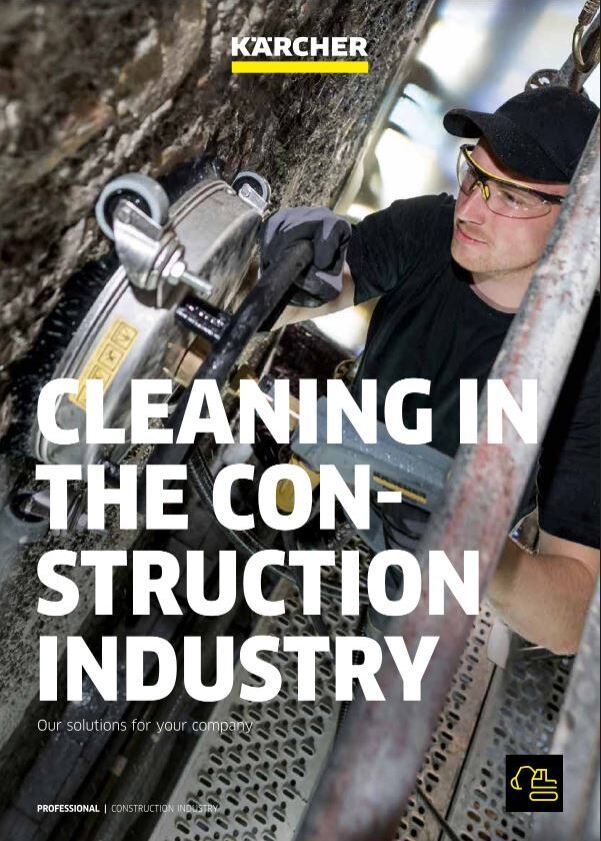Concrete repair with ultra-high-pressure cleaners
Environmental influences, processing errors and dynamic loads can cause damage to concrete structures. To avoid consequential structural problems, these must be remedied by means of concrete maintenance, i.e., removal and repair. While mechanical solutions cause structures to vibrate, the use of ultra-high-pressure water jets minimises how much structure-borne noise the concrete is exposed to, avoiding additional damage in the connection areas. However, water jetting concrete requires skill and precise knowledge of the concrete parameters as well as matching pressure, water delivery rate and the correct water tool for the job.
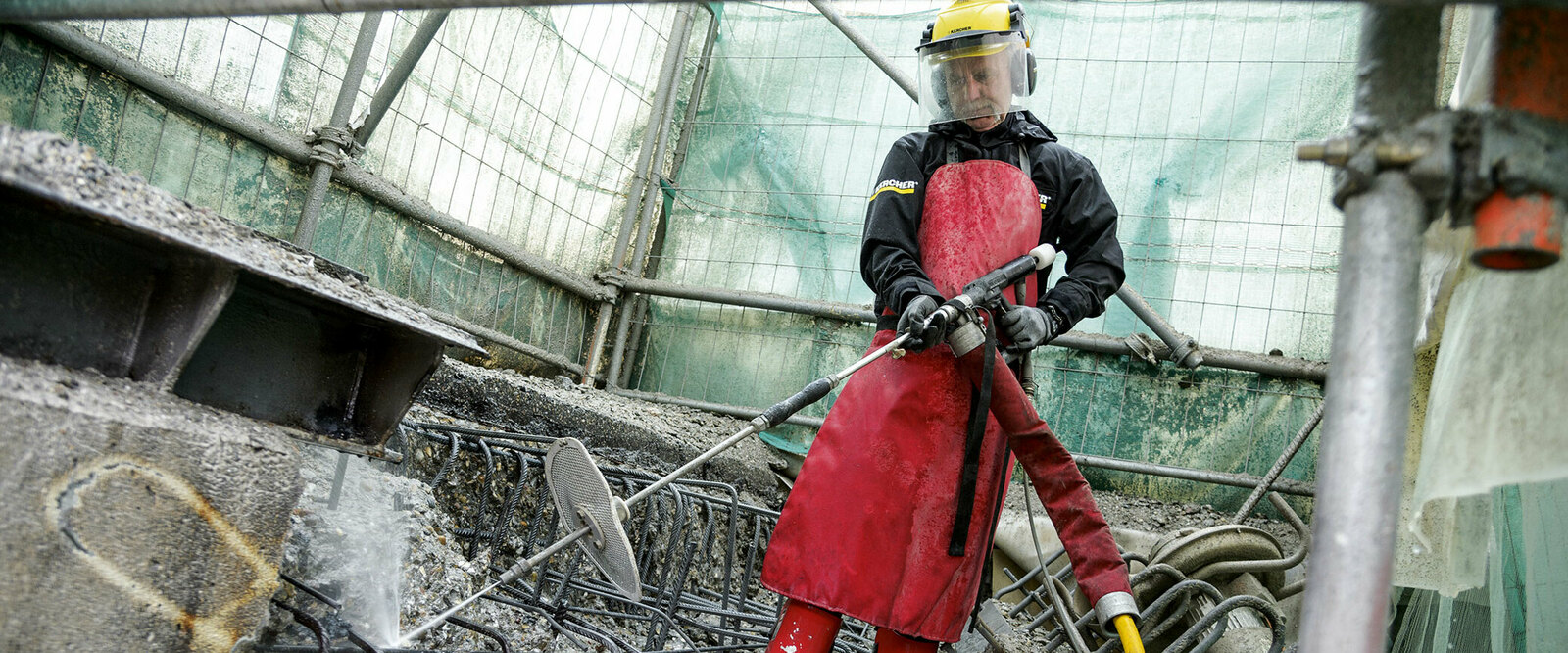
Concrete repair using ultra-high-pressure technology: what you need to know
Whether large-scale concrete removal, stripping reinforced concrete or dismantling heavily reinforced concrete slabs; ultra-high-pressure water cleaning is a common solution for a wide range of tasks in the construction industry. Water jetting concrete is now recommended or even required by almost all relevant construction regulations and guidelines for concrete processing and repair.
Parameters in detail: the basis for professional concrete repair
Two factors have a major influence on the result when repairing concrete. First, the essential parameters of the concrete need to be understood. These include reinforcement in the surface, age, carbonation, chloride corrosion and lack of surface strength of the concrete.
It is also important to select the appropriate power when certain water tools are used for concrete resurfacing. The relevant factors are the operating pressure and volume flow of the high-pressure device, which must be matched to the area of application, as well as the selected tool. These include, for example, simple spot or flat spray nozzles and even rotating or externally driven water tools.
Manual water tools have proven their use for selective repair measures. It is important to note that a recoil force of 150 newtons must not be exceeded. When working with body support, the recoil force must not exceed 250 newtons.
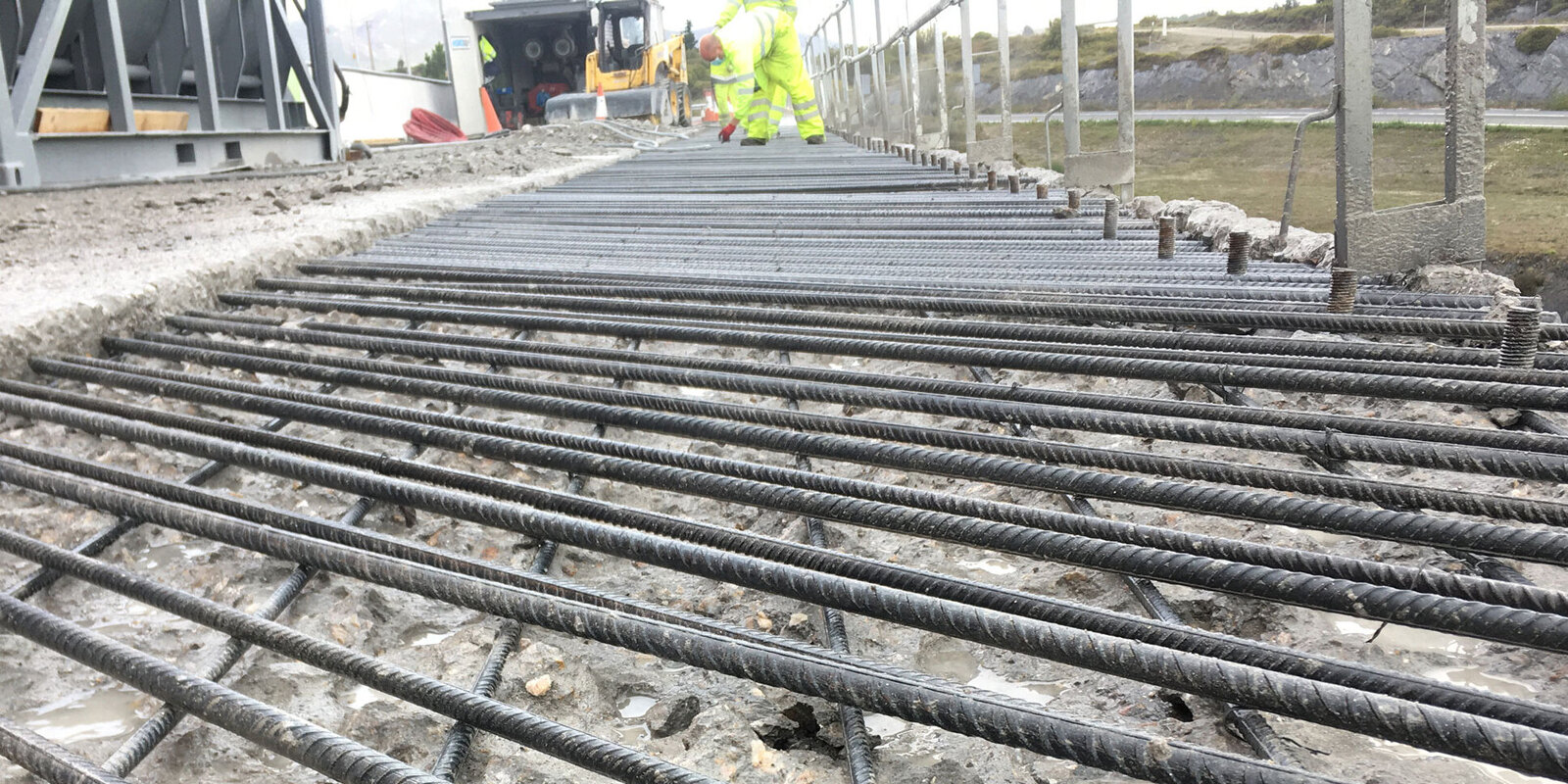
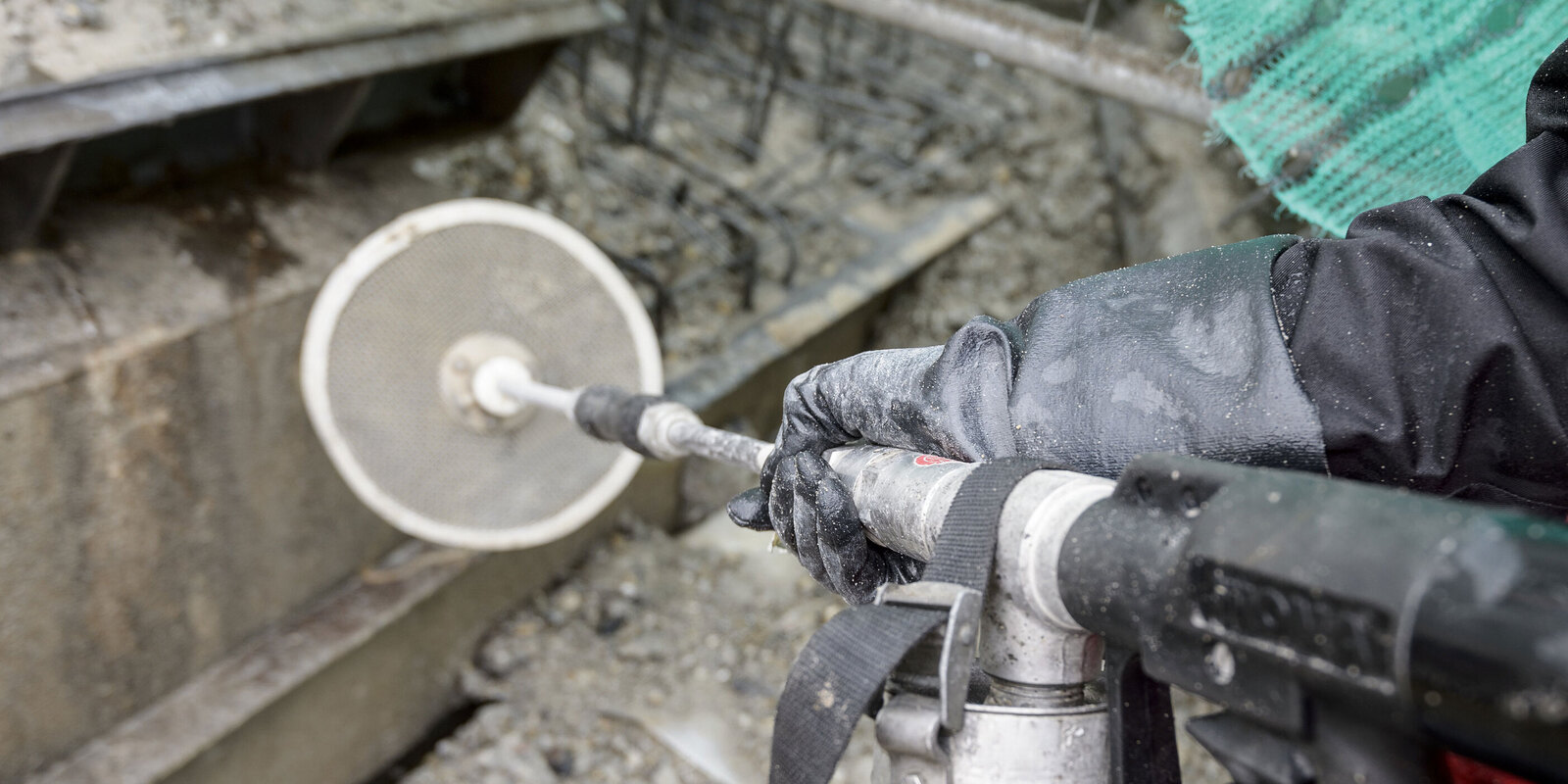
Tip 1 – The correct operating pressure:
In most cases, equipment with an operating pressure of 1,000 to 3,000 bar is used for hand-guided concrete removal. Up to 1,000 bar, removes coating residue, cement slurries or concrete layers with low strength. From operating pressures around 1,500 bar, deep-reaching, large surface area can be removed.
Tip 2 – User safety:
Ultra-high-pressure technology is also ideal in terms of user safety, as no toxic gases, vapours or slag are produced.
Robotics on the rise: large surfaces, high recoil force
As an alternative to hand-guided solutions, automated options are available that are better suited for large areas or when the permitted recoil force for the user is exceeded. In combination with suitable water tools, robotic tools allow safe and efficient work. Projects that take several weeks to complete with hand-held work can be completed within a few days with a professional ultra-high-pressure cleaner.
Tip – Operating pressure and flow rate:
In most cases, the combination of a relatively low operating pressure of around 1,300 bar in conjunction with high flow rates of 200 l/min achieves very good results.
Concrete repair with ultra-high-pressure technology: cantilever objects such as bridges or parking decks
The challenge in bridge repair is that they are often built as prestressed concrete bridges. This means that they are made of reinforced concrete and have additional longitudinal bracing on the bridge girders. If this steel reinforcement starts to rust, it attacks the concrete.
These areas must be exposed, derusted, protected against renewed corrosion and resealed. The external concrete repair required for this purpose needs a precise technique so that any existing installation parts, the steel reinforcement, or connection areas are not damaged. Ultra-high-pressure cleaners protect the concrete around the affected areas. It is designed precisely for these use cases and does not trigger any vibrations or oscillations. This prevents cracks in the remaining concrete and further damage to the bridge. This technology delivers the energy directly into the target concrete where the high-pressure jet removes concrete chunks. It penetrates right down to the steel reinforcement, exposing it without damaging it, and at the same time derusts it very efficiently.
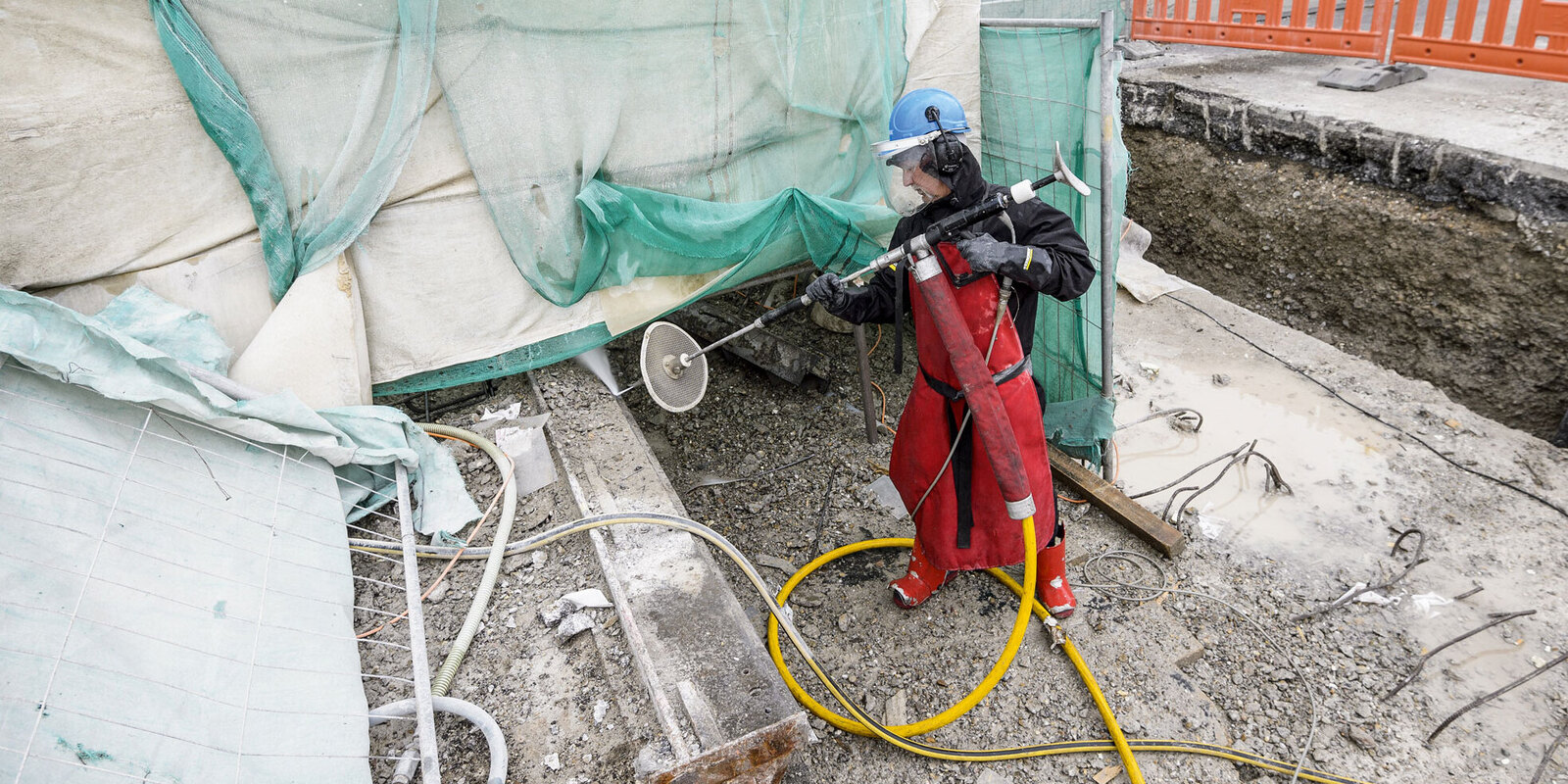
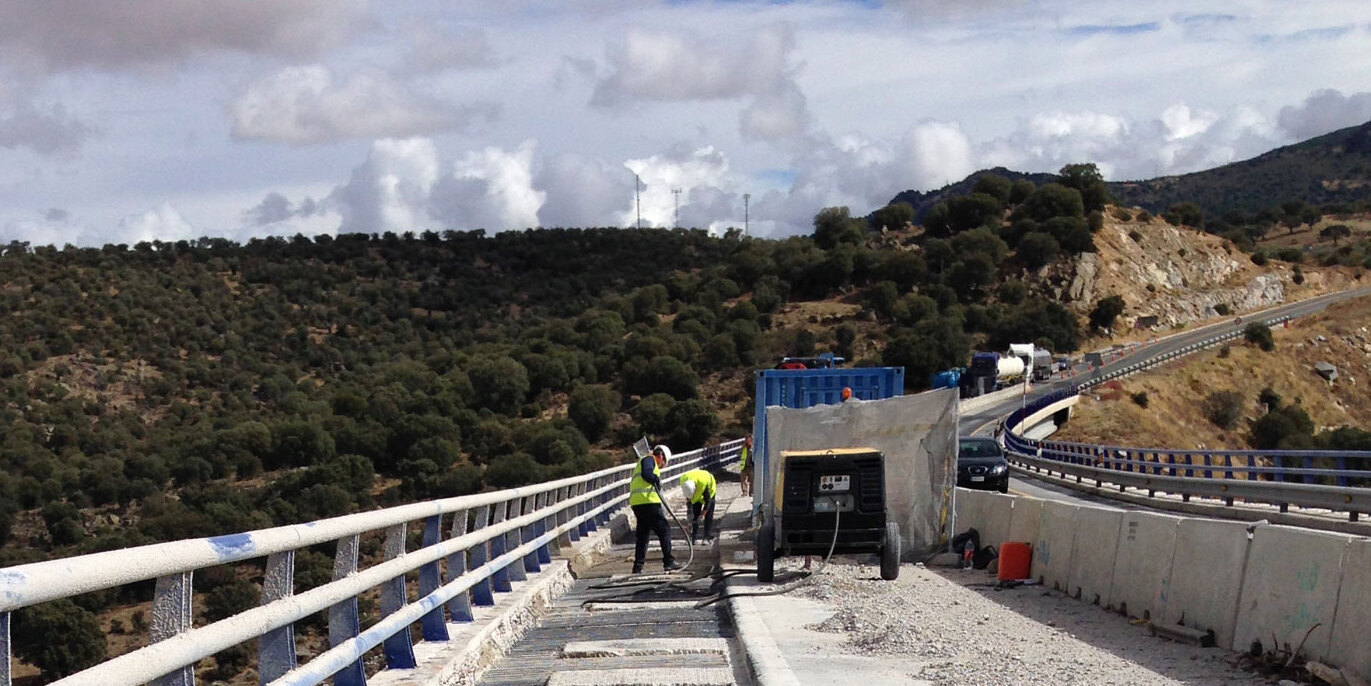
The same applies to parking decks where concrete resurfacing is required; in this case, ultra-high-pressure technology can even help to accurately detect the need for repairs. The background to this is that the concrete can be removed more easily from carbonated, i.e., already damaged, areas than from non-carbonated areas. Concrete patching therefore immediately shows where repairs are needed. Roughening of the surface is also possible to prepare for concrete surface repair.
In addition, concrete can easily be rehabilitated in confined spaces or outside work can be carried out at great heights, as only the high-pressure hose and water tools need to be brought to the site. Tanker trucks can remain outside the building.
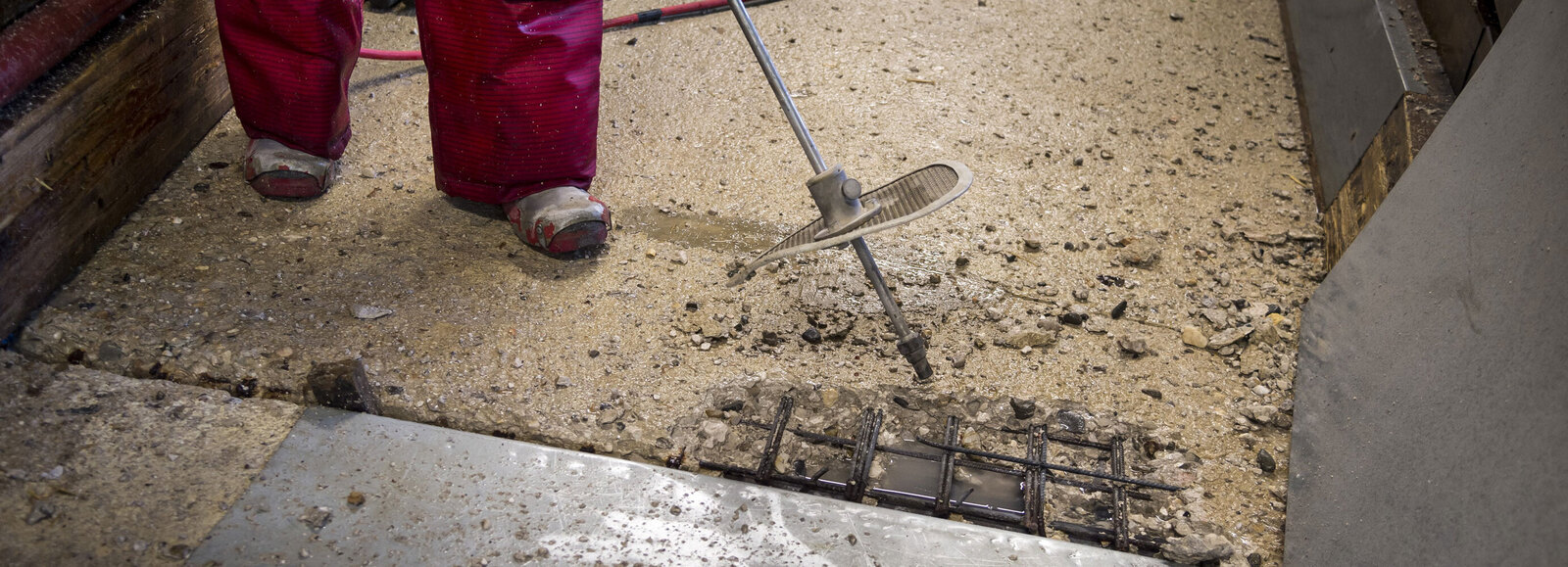
Concrete repairs using ultra-high-pressure technology: industrial buildings
Ultra-high-pressure water jets are very often used in industrial building renovations because the technique is very flexible – from the repair of steel reinforcement to the removal of hazardous materials and concrete cutting.
A universal solution for all requirements
If steel reinforcement begins to rust due to a lack of cover, these areas need to be exposed as quickly as possible, derusted and resealed after applying corrosion protection. As with bridge repair, ultra-high-pressure water jetting permits vibration-free, precise work, which means that no additional damage occurs.
Another area of application for ultra-high-pressure technology in the industrial sector is the removal of toxic substances. This may be necessary, for example, if substances were classified as harmless years ago but are now on the list of toxic substances. These hazardous substances are removed directly using suction-enabled water tools. In downstream water treatment, the hazardous substances are separated from the suspension so that they can be disposed of in an environmentally friendly way.
Structural modifications with ultra-high-pressure technology: concrete cutting of openings and culverts
The basic idea of concrete cutting by means of high-pressure water jets is to add solid particles to the water jet called abrasives. The necessary high water pressures are provided by plunger pumps which are particularly effective.
Cutting is possible in all areas - even in hard-to-reach places. No matter where the work has to be carried out, tank trucks can stay outside just like in concrete repairs. The cutting process can be continually adjusted and controlled, allowing for precise work.
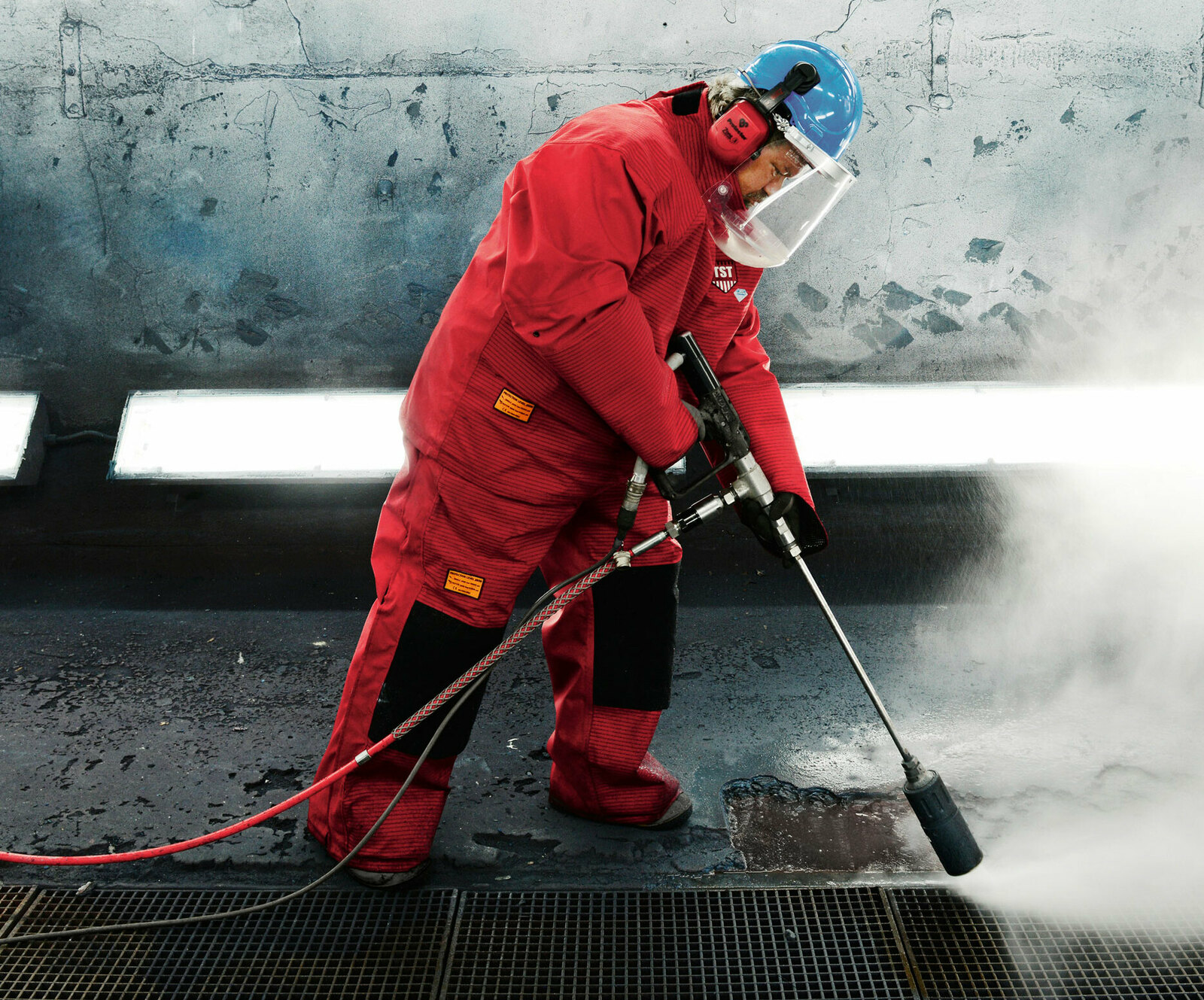
Tip – Ongoing operation:
Work can be carried out during ongoing production operations, as concrete cutting using ultra-high-pressure technology doesn’t create dust or sparks.
Questions for purchasing: what should the technology be able to do?
In order to achieve the ideal TCO for industrial purposes and long-term planned use, the following questions help you choose the right ultra-high-pressure technology solutions:
- Is there condition monitoring to ensure safety?
- Is the product designed with durability and low operating costs in mind, for example by means of pressure-speed regulation, pressureless circulation or adequate coating of the valves?
- Is an operating pressure of up to 3,000 bar feasible?
- Is there a safety collection tub to prevent any leaking operating fluids from entering the environment during concrete repair?
- What flexibility does the product offer with regard to mobile or stationary versions, or equipment with combustion or electric motor?
- Is there a sound insulation hood for reduced noise in operation?
One-size-fits-all: What ultra-high-pressure cleaners can do
- Vibration-free concrete removal
- Easy detection of weak spots prior to concrete repair
- Precise removal of selective damage
- Large-area removal also with robotic support
- Roughening surfaces in preparation for the application of new layers
- Work in confined spaces or at great heights
- Removal of hazardous materials without toxic fumes or slag
- Concrete cutting (with the addition of abrasives)



